The Science of Muscle Tone: What Every MT Should Know
The content below is an excerpt from our latest online course, Stress Busting: Your Massage Superpower.
We are all aware that we can use our muscles voluntarily to complete a task, for example, reaching out to pick a book off a shelf. However, we are seldom aware of the constant muscular activity underlying these voluntary movements. For example, we are aware of our arm muscles contracting as we reach up toward the bookcase, but we are not aware of the muscular activity that holds our eyelids open or that holds our head upright to see the book. Neither are we aware of the muscular activity through the trunk and legs that keeps us upright as our center of gravity changes with the movement of the arm. Most of the activity in the muscles occurs at a subconscious level. The neuromuscular activity that stabilizes our joints and keeps us upright is referred to as muscle tone. Muscle activity associated with voluntary movement is usually referred to as muscle contraction.
Tone is dynamic. It can change quickly in response to the demands made on the muscles. If we lie on our backs, the body needs very little stabilization, and tone decreases. If we stand, the muscles of the legs, torso, and neck must increase their level of tone to maintain the body in an upright position against gravity.
Sensory input from many sources, including the eyes, ears, muscles, joints, and skin, travels along sensory neurons and enters the spinal cord. The inhibitory or excitatory signals carried by these neurons lead to responses in alpha motor neurons, which are nerve fibers directly responsible for muscle contraction.
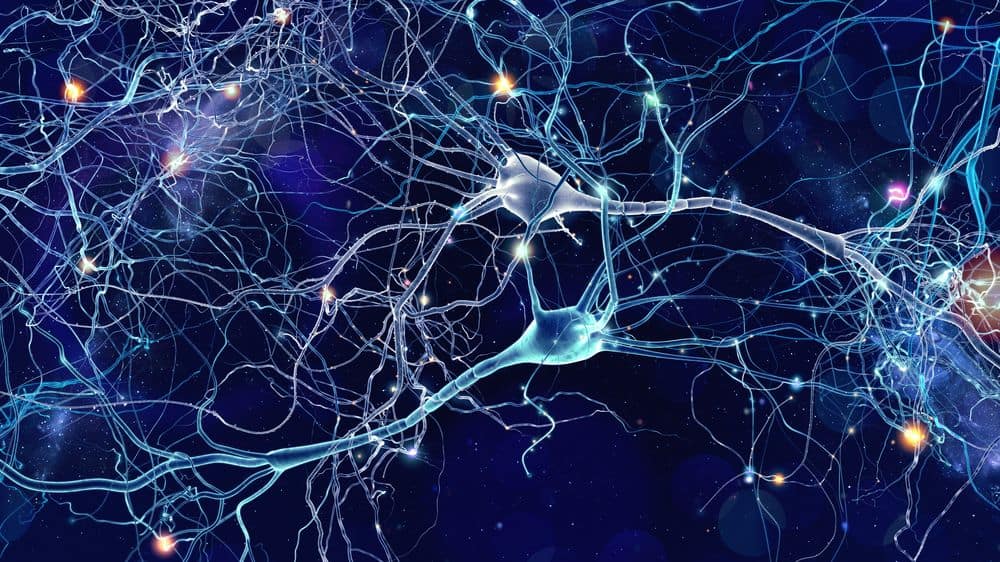
The balance of these inhibitory or excitatory messages activates or suppresses the firing of the alpha motor neurons and determines the level of tone in the muscles.
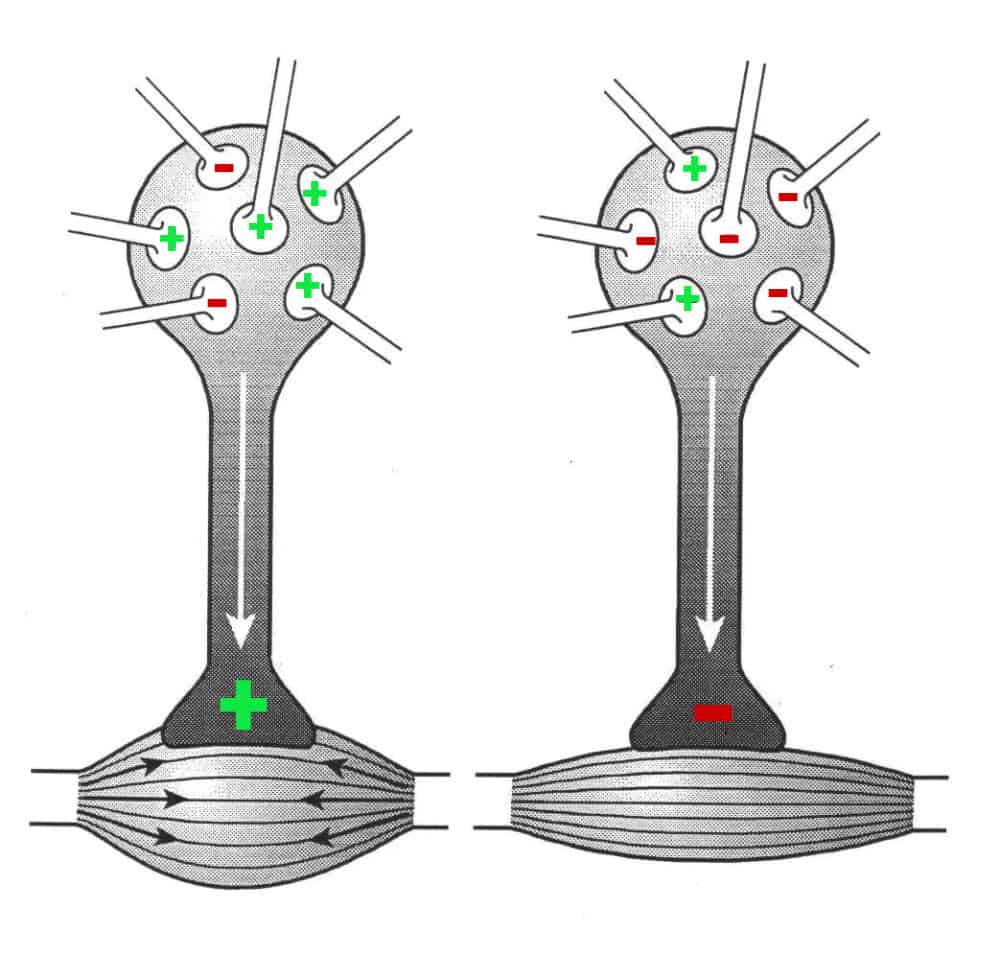
Spinal Reflexes
Tone is influenced to a large extent by spinal reflexes. A spinal reflex is an automatic motor response controlled solely by neural circuits in the spinal cord. These reflexes are often related to posture and locomotion. Because these reflexes are mediated through the spinal cord and not the brain, they occur below the level of consciousness.
One spinal reflex that plays a particularly important role in the production of tone is the stretch reflex. When a muscle is stretched suddenly it reacts by contracting. An example is the knee jerk reflex elicited by a doctor tapping a patellar tendon with a small hammer. Hitting the tendon places a sudden stretch on the quadricep muscles that then reflexly contract, making the lower leg jerk upward.
The stretch reflex is a protective one against overstretch in a muscle, but it also plays a role in controlling tone. To illustrate this role in the regulation of tone, try standing upright with your eyes closed. Notice that your body does not stay perfectly still. It sways. As your body sways forward the backs of your legs begin to stretch. The stretch reflex is then elicited which increases the tone in the muscles of the calves to pull you back to a neutral position again.
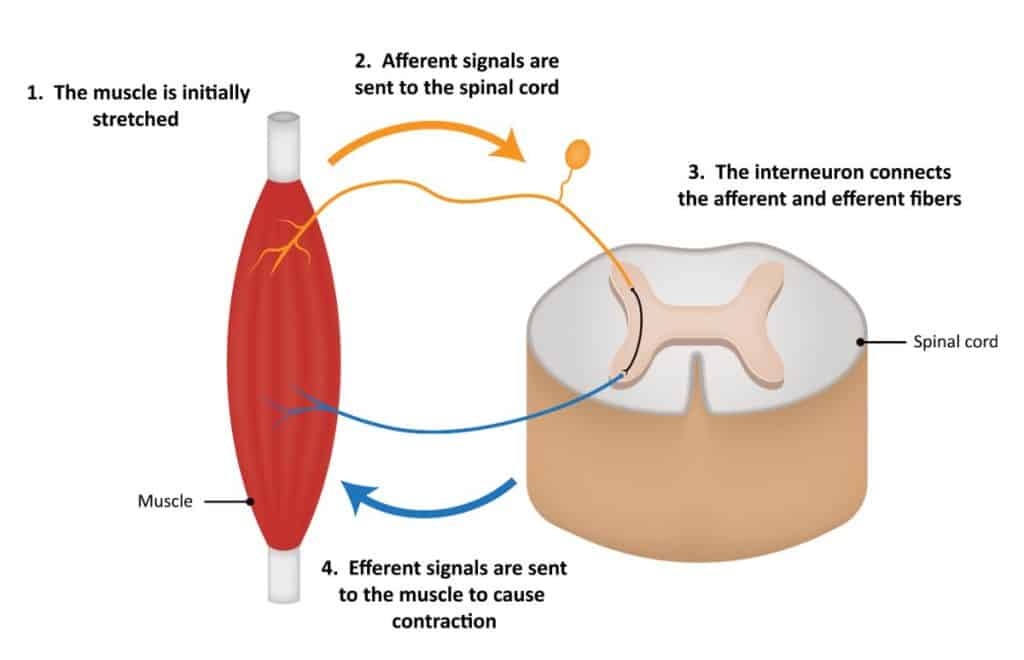
Proprioception: Our Silent Sixty Sense
Proprioception is your body’s ability to sense movement, action, and location. In other words, it’s your kinesthetic sense and it provides you with an awareness of where your limbs are and how your bodies are positioned in space. As an exercise, touch your nose and then touch an object within arm’s reach. Do this several times. Now close your eyes and repeat the process. You’re able to reproduce the movement and find the object even though you can’t see it because of your kinesthetic memory. If you lost your proprioceptive sense, you would have no sense for movement. You would fall to the ground, and if you tried to move, you would simply flail around helplessly.
Proprioception takes place through spinal reflexes. Because we are consciously unaware of activity taking place at the spinal cord level, proprioception is referred to our silent sixth sense. And it’s a good thing that this sense is invisible our else you wouldn’t be able to move without thinking about your next step. Your brain would be overwhelmed with movement sensation.
Proprioception is different from our other senses in another way: It never turns off, except in very rare cases. We know what silence is when we cover our ears, we know what darkness is when we shut our eyes, but we can’t turn off our proprioceptive sense. It’s always working unconsciously in the background.
The Muscle Spindle
The sensory receptor that senses the stretch of a muscle is the muscle spindle.1,2 Muscle spindles are proprioceptors. The muscle spindles help us sense the position of our body by giving us feedback about the length of our muscles.
This small receptor is found within skeletal muscles and is encased in a connective tissue sack between muscle fibers. Inside the muscle spindle are a number of small muscle fibers called intrafusal fibers to distinguish them from the larger and longer fibers of the skeletal muscle itself, the extrafusal fibers. The middle portion of the intrafusal fibers is elastic, but non-contractile. This part of the intrafusal fiber does not actively contract or relax but is passively stretched or slackened by the extrafusal fibers that surround it, so that if the muscle is stretched then the elastic portion of the intrafusal fibers are stretched. A sensory ending, the annulospiral receptor, is wrapped around this central section. The annulospiral receptor is activated when the central section is stretched sufficiently, and this triggers an impulse along a sensory neuron to the spinal cord. This sensory neuron excites the alpha motor neuron at the spinal cord. In turn, the alpha motor neuron stimulates the muscle fibers associated with the spindle to contract.
It is important to note, however, that this is not an all or nothing response. The spindle is constructed in such a way that the amount of stretch needed to elicit the reflex can be varied. In this regard, the spindle acts like a thermostat. It can raise or lower the annulospiral receptor’s threshold to stretch: it lowers the threshold so that the muscles contract quickly in response to small changes in length, or it raises the threshold so that there is very little activity in response to length changes.
It is the internal structure of the muscle spindle that makes this thermostat-like action possible. Except for the central portion, the rest of the intrafusal fiber is skeletal muscle. Like all muscle fibers, the intrafusil fibers are capable of contraction. Whereas extrafusil fibers are innervated by alpha motor neurons, intrafusil fibers are innervated by gamma motor neurons.
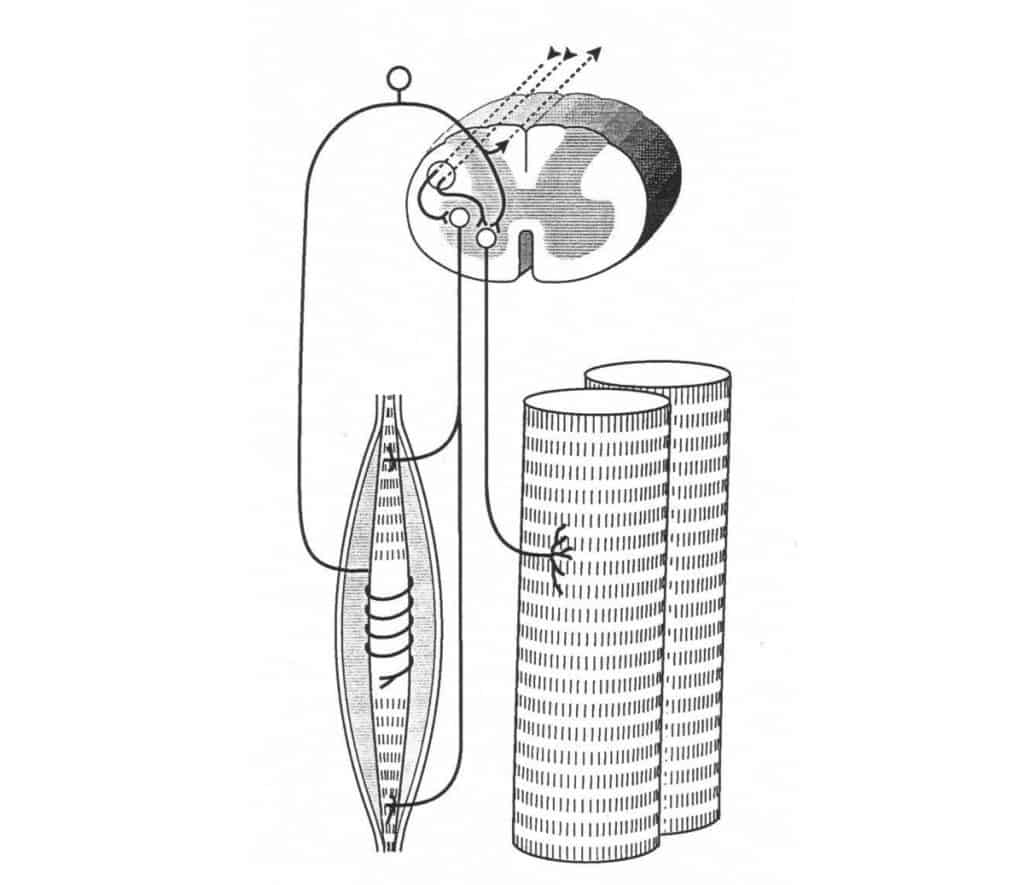
The Gamma Motor System: The Key to Muscle Tone
It’s surprising that most massage therapists are unaware of the gamma motor neuron system despite its vital role in controlling muscle tone.3 About 30% of all motor neurons are gamma motor neurons.4
When the gamma motor neurons are active, they cause the intrafusal fibers to contract, and the central, elastic portion of the intrafusal fibers is placed under a slight stretch. As a result, the annulospiral receptor becomes much more sensitive and reactive to stretching of the extrafusal fibers. Likewise, the annulospiral receptor can be slackened by relaxation of the intrafusal fibers making it less reactive when the extrafusal fibers are lengthened. Consequently, the stretch reflex and tone can be modulated.
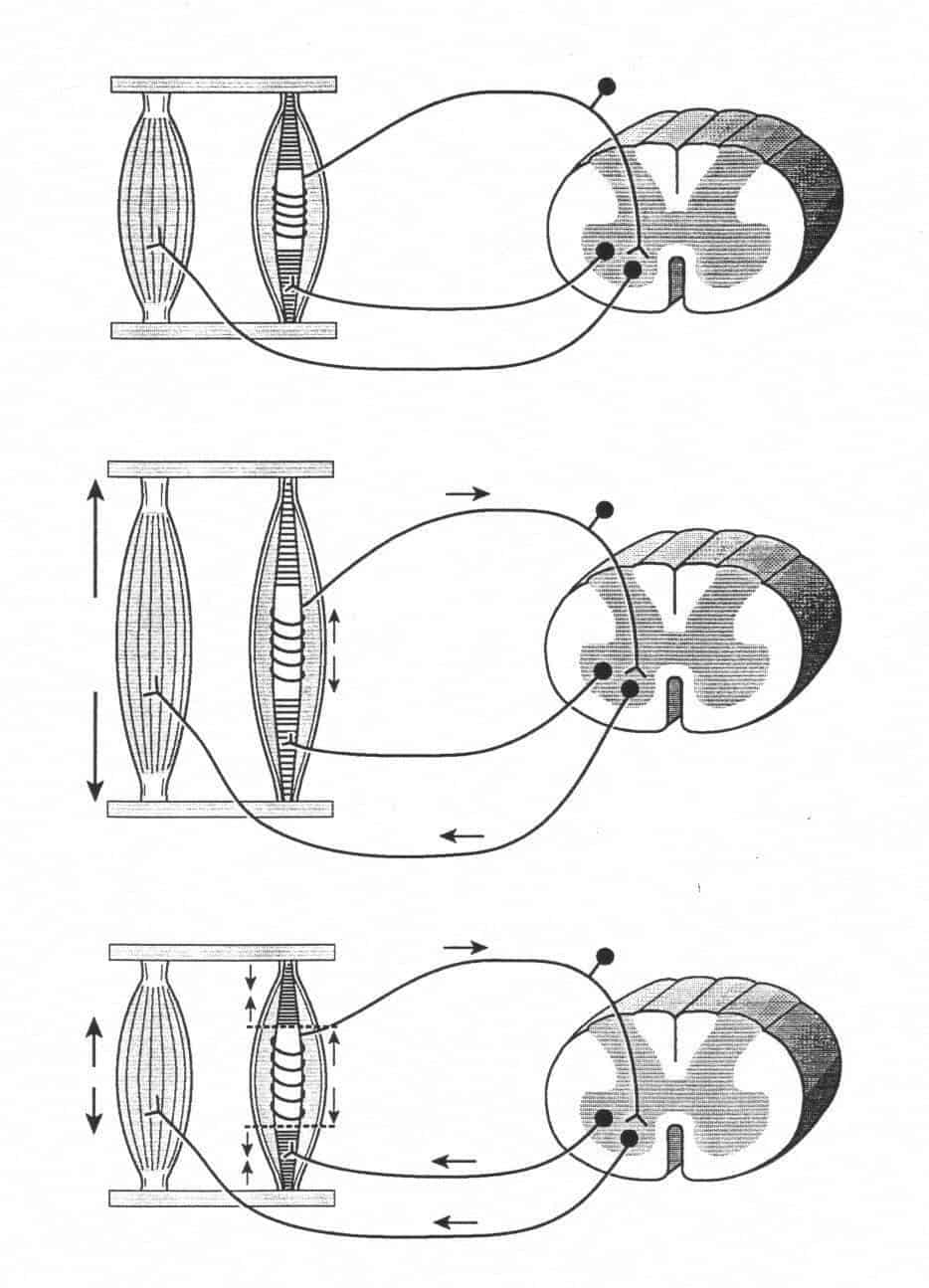
The gamma motor neuron system has a powerful, albeit indirect, influence on muscle tone through its association with the muscle spindle and alpha motor system. This association is referred to as the gamma loop. It is through this modulated reflex that we can recognize a link between stress and muscle tone.
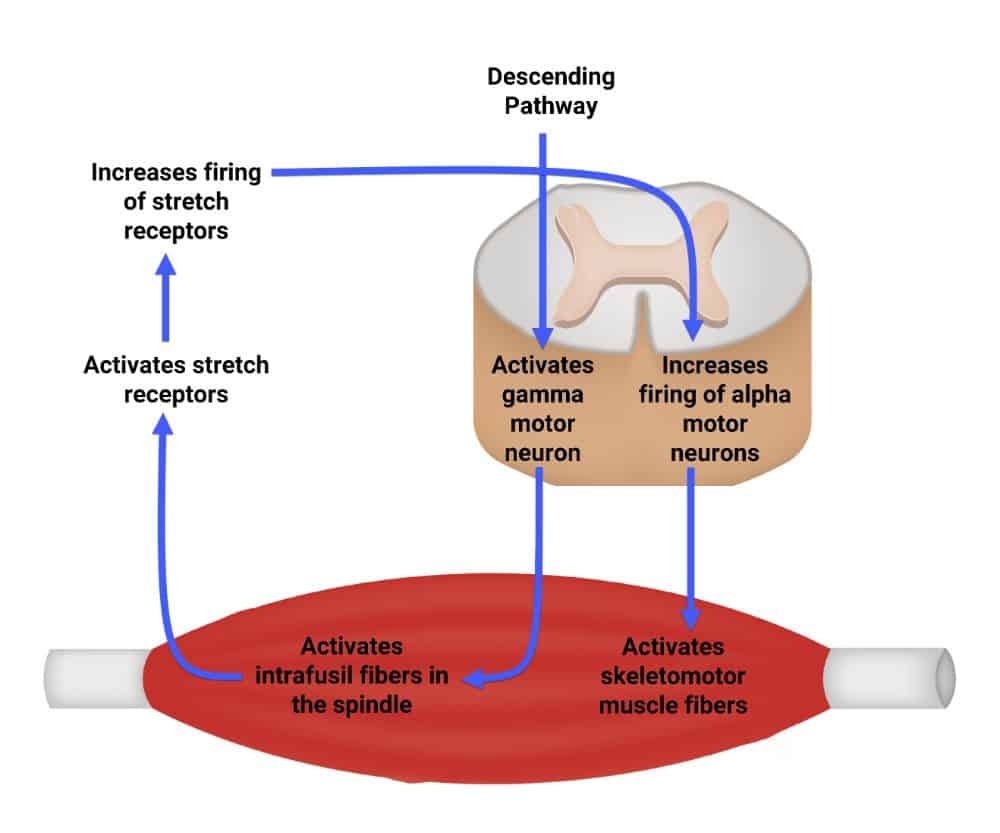
In response to stress, the hypothalamus initiates a generalized increase in activity of the gamma motor neurons. The result of this gamma stimulation is contraction of the intrafusal fibers. Muscle spindles throughout the body become more reactive as stretch is placed on their annulospiral receptors and the stretch reflex is triggered more easily. This all translates to greater activity in the alpha motor neurons and more activity in the skeletal (extrafusal) muscle fibers. This process prepares the body for action, for fight or flight, by improving the sensitivity of the muscle and decreasing its reaction time.
Once the stress stops, the increased level of tone decreases. If the level of tone persists the result is tension. To differentiate this abnormal level of tension in the muscles from tension in other tissues the term neuromuscular hypertension would be more appropriate. In this discussion on tone, we will simply use the term tension.



